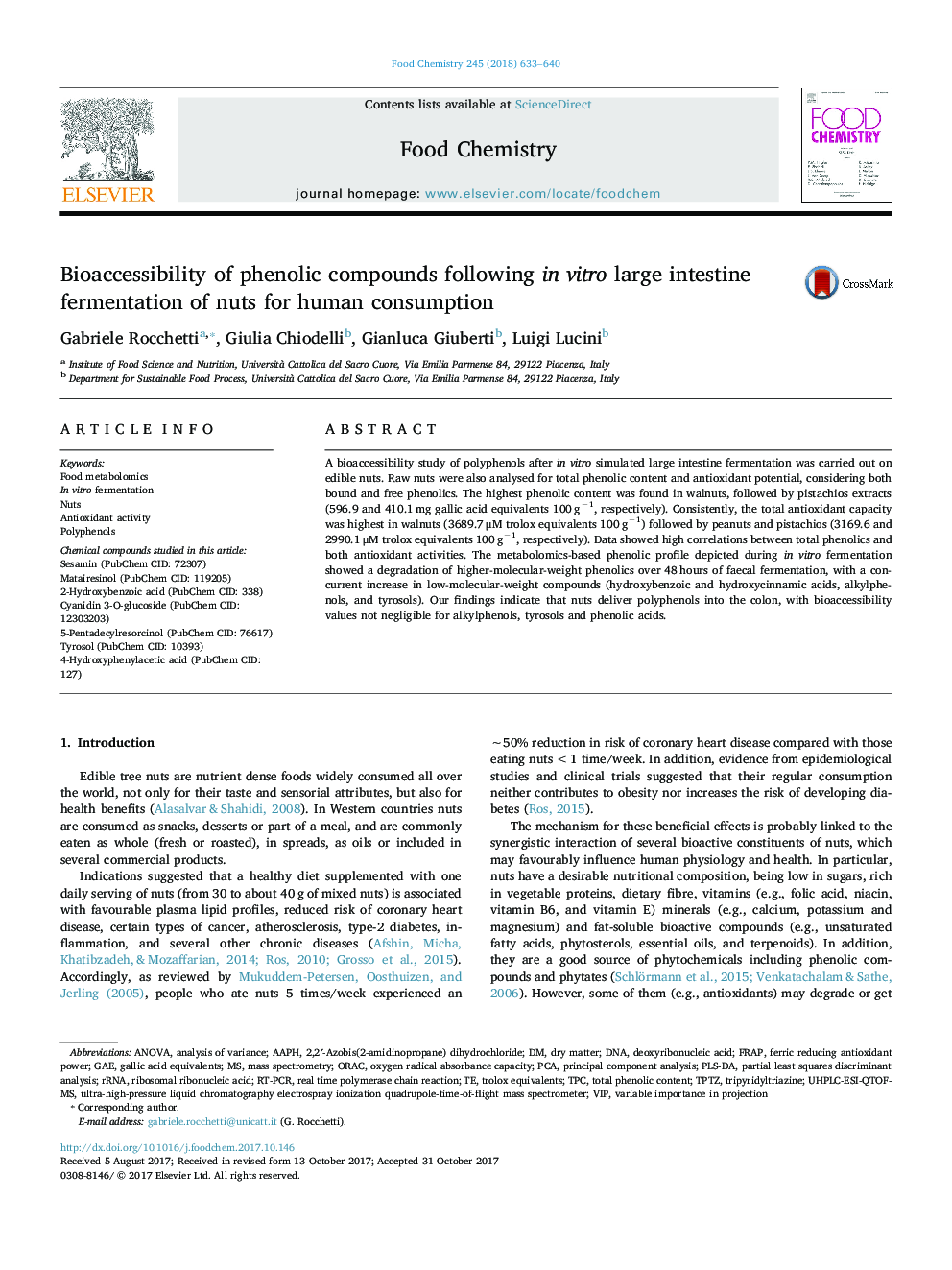| Article ID | Journal | Published Year | Pages | File Type |
|---|---|---|---|---|
| 7586439 | Food Chemistry | 2018 | 8 Pages |
Abstract
A bioaccessibility study of polyphenols after in vitro simulated large intestine fermentation was carried out on edible nuts. Raw nuts were also analysed for total phenolic content and antioxidant potential, considering both bound and free phenolics. The highest phenolic content was found in walnuts, followed by pistachios extracts (596.9 and 410.1â¯mg gallic acid equivalents 100â¯gâ1, respectively). Consistently, the total antioxidant capacity was highest in walnuts (3689.7â¯Î¼M trolox equivalents 100â¯gâ1) followed by peanuts and pistachios (3169.6 and 2990.1â¯Î¼M trolox equivalents 100â¯gâ1, respectively). Data showed high correlations between total phenolics and both antioxidant activities. The metabolomics-based phenolic profile depicted during in vitro fermentation showed a degradation of higher-molecular-weight phenolics over 48â¯hours of faecal fermentation, with a concurrent increase in low-molecular-weight compounds (hydroxybenzoic and hydroxycinnamic acids, alkylphenols, and tyrosols). Our findings indicate that nuts deliver polyphenols into the colon, with bioaccessibility values not negligible for alkylphenols, tyrosols and phenolic acids.
Keywords
RT-PCRUHPLC-ESI-QTOF-MSrRNACyanidin 3-O-glucoside (PubChem CID: 12303203)TPTZGAEVIPTPCFRAPAAPHORACPLS-DA2,2′-azobis(2-amidinopropane) dihydrochlorideDNAPCANutsdeoxyribonucleic acidribosomal ribonucleic acidgallic acid equivalentsvariable importance in projectionPartial least squares discriminant analysisPrincipal component analysisanalysis of varianceANOVAin vitro fermentationTrolox EquivalentsTyrosol (PubChem CID: 10393)Mass spectrometryoxygen radical absorbance capacityAntioxidant activitydry matterFood metabolomicsTotal phenolic contentReal time polymerase chain reactionPolyphenolsferric reducing antioxidant power
Related Topics
Physical Sciences and Engineering
Chemistry
Analytical Chemistry
Authors
Gabriele Rocchetti, Giulia Chiodelli, Gianluca Giuberti, Luigi Lucini,
